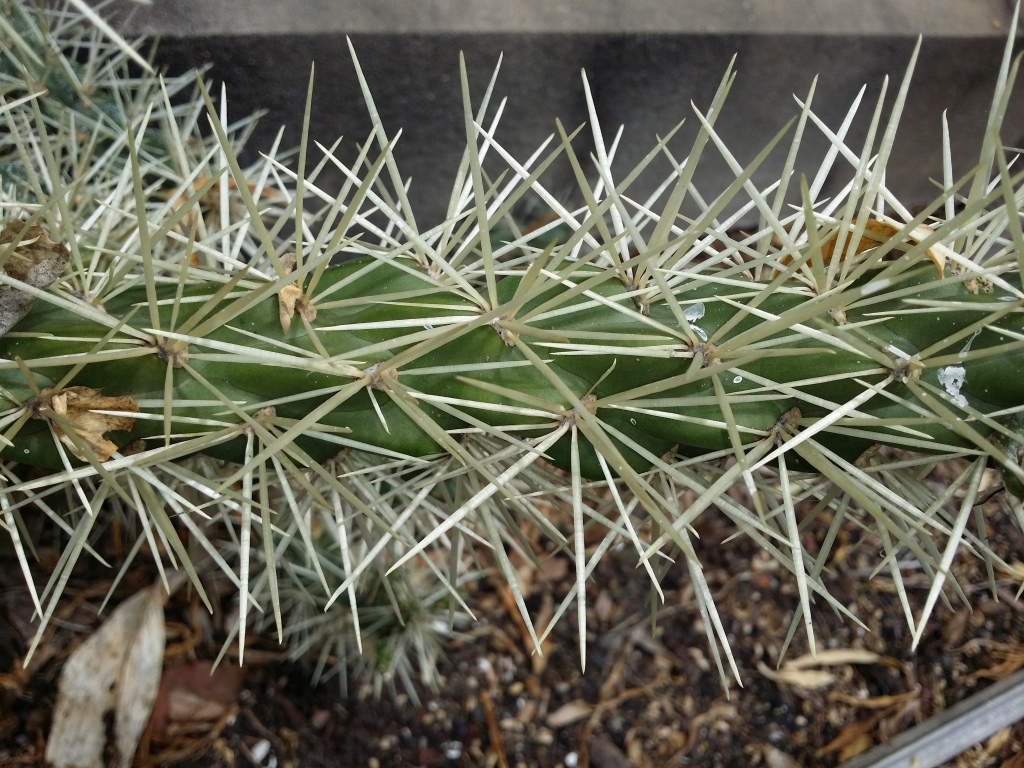Cylindropuntia
Erect or spreading multi-branched shrubs or small trees, growth indefinite. Stem-segments (cladodes) cylindrical to somewhat clavate, rarely compressed, distinctly tuberculate, firmly attached to easily detached; tubercles elongate, raised and rib-like, sometimes mamillate. Leaves restricted to young developing stems and on young hypanthia, rudimentary, caducous, terete, more or less subulate; areoles invested with glochids, spines, hairs and/or glands; spines 1–many, rarely absent, setaceous, acicular or subulate, barbed or smooth. Flowers sessile, lateral or subterminal, rarely terminal, bisexual or occasionally functionally female, regular; perianth segments numerous, spreading to erect, virtually free, inserted on hypanthium apex, deciduous; sepaloids mostly green, grading to off-white or coloured petaloids; petaloids green, yellow, bronze to pink, red or magenta; stamens numerous, inserted in numerous rows; style thick, with 5–10 stigmas; ovary inferior, immersed within hypanthium. Fruit fleshy or dry, indehiscent, with glochidiate areoles and sometimes spines, solitary or forming short to long chains by proliferation; seeds flattened, circular or squarish to angular, glabrous, funicular girdle smooth or with a low marginal ridge.
Eight species are naturalised in Australia, present in most States/Territoties except ACT and Tasmania. About 35 species, extending from south-western and southern United States of America, south to Mexico, one species in South America, another in Caribbean (Anderson 2001).
Cylindropuntia is one of several genera that have been separated from Opuntia, which research has shown to be polyphyletic (Anderson 2001). Barcenas (2016) has confirmed previous studies which have shown that Cylindropuntia is monophyletic.
 Spinning
SpinningAnderson, E.F. (2001). The Cactus Family. Timber Press.
Barcenas, R.T. (2016). A molecular phylogenetic approach to the systematics of Cylindropuntieae (Opuntioideae, Cactaceae). Cladistics 32(4): 351–359.




